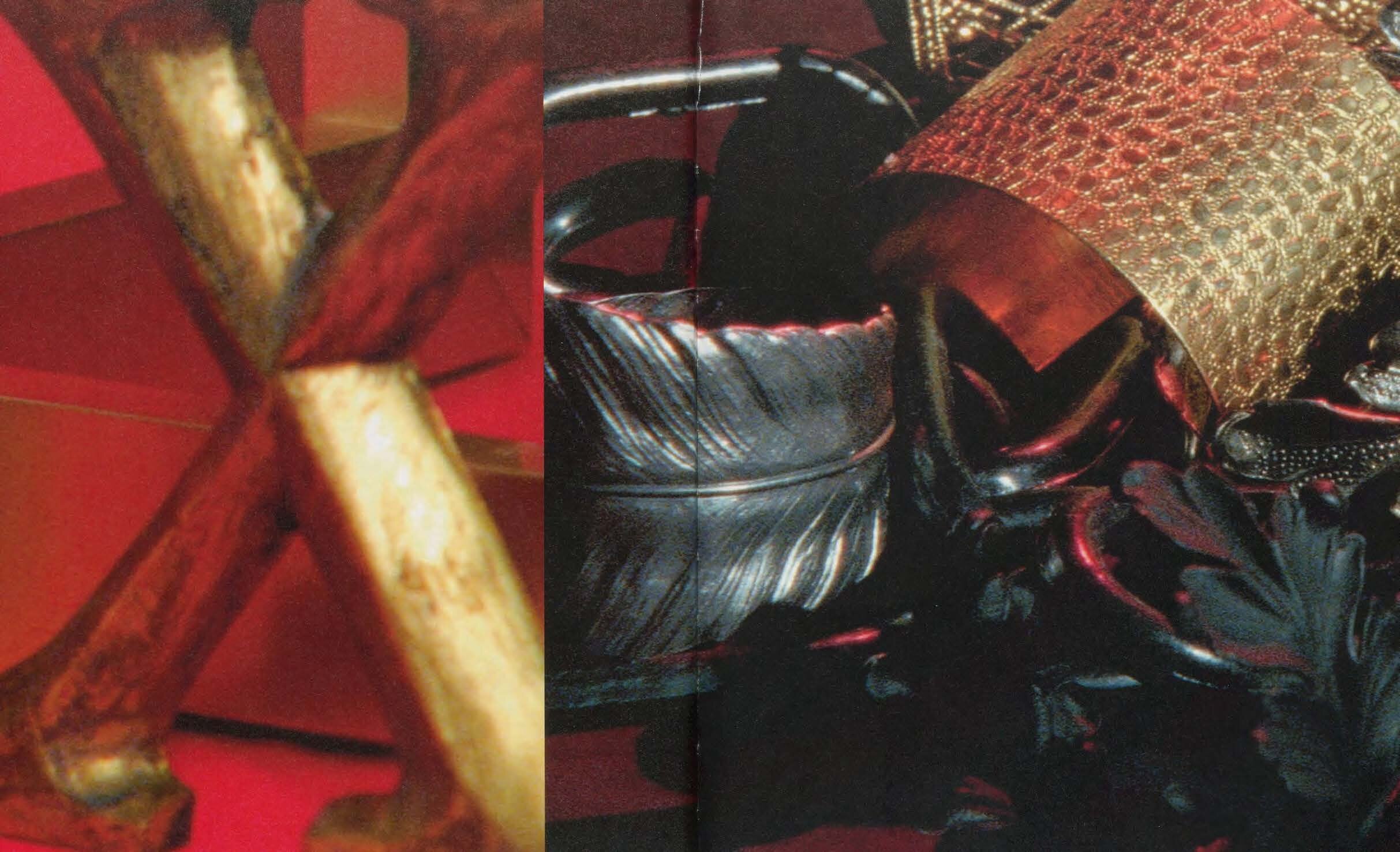Parkett Vol. 96 - 2015 | Marc Camille Chaimowicz, Pamela Rosenkranz, John Waters, Xu Zhen
Marc Camille Chaimowicz
Read a selected text (PDF)
View edition
Pamela Rosenkranz
Read a selected text (PDF)
View edition
John Waters
Read a selected text (PDF)
View edition
Xu Zhen
Read a selected text (PDF)
View edition
Insert Isabelle Cornaro (PDF)
Spine Chuan-Lun Wu
Miscellaneous
Anna Boghiguian by Nuria Enguita Mayo (PDF)
U.S. & Canada
Please place your order through our distributor D.A.P. here.
Marc Camille Chaimowicz
Read a selected text (PDF)
View edition
Pamela Rosenkranz
Read a selected text (PDF)
View edition
John Waters
Read a selected text (PDF)
View edition
Xu Zhen
Read a selected text (PDF)
View edition
Insert Isabelle Cornaro (PDF)
Spine Chuan-Lun Wu
Miscellaneous
Anna Boghiguian by Nuria Enguita Mayo (PDF)
U.S. & Canada
Please place your order through our distributor D.A.P. here.
Marc Camille Chaimowicz
Read a selected text (PDF)
View edition
Pamela Rosenkranz
Read a selected text (PDF)
View edition
John Waters
Read a selected text (PDF)
View edition
Xu Zhen
Read a selected text (PDF)
View edition
Insert Isabelle Cornaro (PDF)
Spine Chuan-Lun Wu
Miscellaneous
Anna Boghiguian by Nuria Enguita Mayo (PDF)
U.S. & Canada
Please place your order through our distributor D.A.P. here.
Browse Selected Texts and more on the Collaboration Artists
Artist Insert
View Isabelle Cornaro’s Insert (PDF)
See the special INSERTS limited edition
Editorial
The artists in this issue—Marc Camille Chaimowicz, Pamela Rosenkranz, John Waters, and Xu Zhen—inquire into the varied and complex relationship between art and life. They direct their attention to a world determined by artificiality, in which the ceaseless material and immaterial circulation of goods undeniably impacts our thoughts and feelings.
In her article on Marc Camille Chaimowicz, Kirsty Bell observes that “[p]rivate and public exist in a Mobius strip of mutual transformation.” His art is the embodiment of an all-embracing experience of heterogeneous phenomena, including pictures, sound, language and the real-world environment, in which the object is but one elementamong many. “Enchantment” and “glamour” come into play, while in Xu Zhen’s work, the astonishing term “heavenly realm” appears as an element that warms the soul.
Xu Zhen’s exploration of the heavenly realm is all the more astonishing, for, “rather than resisting capitalism overtly,” as Monika Szewczyk writes, the artist situates his work within the modalities of corporate culture. Also known by the name of MadeIn, Xu Zhen signals the desire for artists to play a role that responds to the exigencies of globalization.
John Waters devotes himself to the duality of good and evil, only to postulate the dissolution of that duality, for instance, when explaining his great admiration of the mythical figure of Jayne Mansfield: “...her lifestyle was so beyond the limits of what could be called ‘bad’ that she ended up defining for me what was ‘good’ about show business.” We read this in “Tragedy,” a text that Waters wrote to accompany his edition for Parkett, consisting of an object that might well have been made out of a coalesced fluid known as “publicity.” Binaries also inform the work of Pamela Rosenkranz in her exploration of such crucial dualities as nature and artifice or subject and object. The Mobius strip comes to mind once again, when we are confronted with the pet bottle of a well-known brand of carbonated water filled with a pink skin-colored liquid. Nicolas Bourriaud elaborates, “Her work shows us that we must now think of ourselves as being inside an extended network of living things rather than as observers looking on from outside.” Through their inquiry into binary orders, the artists in this issue of Parkett grapple with contemporary phenomena as if there were unknowns to be discovered in things omnipresent that have imperceptibly taken possession of us.
Isabelle Cornaro’s Insert follows suit. The accumulated materials that she spreads out before us—an agitated hodgepodge of the cheap merchandise and flea-market fragments disgorged by globalized production—are transformed into a pulsating flow of goods seen in close-up, thus taking a provocatively affirmative stand between painting and readymade. The spine is designed by Chuan Lun.
Table of Content
Cosmic Intimacy : An Approach to the Work of Anna Boghiguian by Nuria Enguita Mayo
Marc Camille Chaimowicz
Marc Camille Chaimowicz’s Provisional Interiors by Kirsty Bell
Appropriation, Replication, Imitation by Lucy McKenzie
Forensic Elegance : Investigating the Art of Marc Camille Chaimowicz by Michael Bracewell
Pamela Rosenkranz
Salon Painting by Colby Chamberlain
Art as Virus by Nicolas Bourrriaud
Slippery Skin by Ruba Katrib
John Waters
John Waters, An Alphabet Book by Christine Macel
Preliminary Scripts to be Read by Marianne Faithfull for the Audio Guide to a Few Works by John Waters’ Next Exhibition by Bruce Hainley
Xu Zhen
Moving in a Bigger Direction by Xu Zhen & Philip Tinari
MadeIn Heaven by Monika Szewczyk
Indecent Proposals by Philippe Pirotte
Isabelle Cornaro, Insert
Mexico City, Les Infos du Paradis by Julieta González






